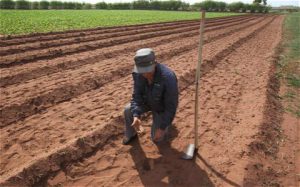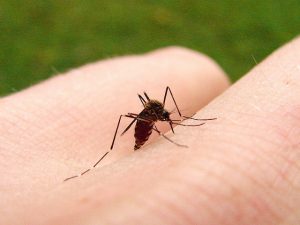“Nobody on this planet is going to be untouched by the impacts of climate change.” The world’s biggest collective of scientists, the Intergovernmental Panel on Climate Change (IPCC), unveiled a part of its fifth assessment report with these words by its chairman Rajendra Pachauri.
The report by IPCC Working Group II – called Climate Change 2014: Impacts, Adaptation and Vulnerability – was prepared by 309 authors from 70 countries. They drew upon 436 contributors and 1,729 reviewers from academia and governments.
The Working Group I report, which looks at climate science, was released late last year. The report of Working Group III, on mitigating climate change, is scheduled for release on April 12. Together they form the fifth assessment report of the IPCC. The fourth assessment report was released in 2007.
Talking about the way global warming is impacting everyone on earth, Pachauri referred to the shrinking of glaciers and how that has “major implications for water and runoff. In the water towers of the world, substantial quantities will be depleted if we do nothing.” This issue is of particular significance in the Hindu Kush Himalayas – called the world’s third pole because it contains the largest amount of fresh water after the Antarctic and Arctic ice sheets. Almost all of the 15,000-odd glaciers in this mountain range are receding due to climate change. This has significant implications for around 1.4 billion people in Asia who depend on the rivers flowing down from the Himalayas.
Other findings of the scientists who prepared the Working Group II report are also very worrying. Several species of animals and plants are finding it difficult to stay in the same place; there are negative impacts on crop yields, especially wheat and maize, and particularly in lower latitudes.
The report’s coordinating lead author Christopher Field pointed out that this would pose a severe challenge to some of the world’s poorest communities and regions. The scientists have found an increase in heat related mortality and vector borne diseases such as malaria.
Climate change is increasing the frequency and severity of extreme weather events like floods, droughts and storms. Pachauri referred to “several key risks in low lying coastal areas, small island states and vulnerable networks like electricity.”
The good news is that people in many parts of the world have started to adapt to climate-change effects, though these changes are not as well documented as they should be, Field said. Without adaptation and mitigation of greenhouse-gas emissions, mainly carbon dioxide, which are warming the atmosphere and the oceans, Pachauri warned there was a “risk of crossing tipping points” beyond which adaptation could fail.
That, he pointed out, would also have implications for human security everywhere, because “climate change can lead to displacement and conflicts. This has implications for territorial integrity.”
Michel Jarraud, head of the World Meteorological Organization, said at the release, “We have so much evidence [of climate change being caused by human activities] we can no longer plead ignorance.”
The report concludes that responding to climate change involves making choices about risks in a changing world. The nature of the risks of climate change is increasingly clear, though climate change will also continue to produce surprises. The report identifies vulnerable people, industries and ecosystems around the world. It finds that risk from a changing climate comes from vulnerability (lack of preparedness) and exposure (people or assets in harm’s way) overlapping with hazards (triggering climate events or trends). Each of these three components can be a target for smart actions to decrease risk.
The report identifies eight key risks to the world from climate change:
• Risk of death, injury, ill-health or disrupted livelihoods in low-lying coastal zones and small island developing states and other small islands, due to storm surges, coastal flooding and sea-level rise
• Risk of severe ill-health and disrupted livelihoods for large urban populations due to inland flooding in some regions
• Systemic risks due to extreme weather events leading to breakdown of infrastructure networks and critical services such as electricity, water supply and health and emergency services
• Risk of mortality and morbidity during periods of extreme heat, particularly for vulnerable urban populations and those working outdoors in urban or rural areas
• Risk of food insecurity and the breakdown of food systems linked to warming, drought, flooding and precipitation variability and extremes, particularly for poorer populations in urban and rural settings
• Risk of loss of rural livelihoods and income due to insufficient access to drinking and irrigation water and reduced agricultural productivity, particularly for farmers and pastoralists with minimal capital in semi-arid regions
• Risk of loss of marine and coastal ecosystems, biodiversity and the ecosystem goods, functions and services they provide for coastal livelihoods, especially for fishing communities in the tropics and the Arctic
• Risk of loss of terrestrial and inland water ecosystems, biodiversity and the ecosystem goods, functions and services they provide for livelihoods
The authors point out that many key risks constitute particular challenges for the least developed countries and vulnerable communities, given their limited ability to cope.
For the first time, the IPCC has analysed the effects of climate change by region. This part of the Working Group II report was leaked about a fortnight before the official unveiling, and the major findings for China and the rest of Asia have been reported on chinadialogue.
Talking about the ways to adapt to climate-change effects, the report points out, “Adaptation is place and context specific, with no single approach for reducing risks appropriate across all settings.” However, “Adaptation planning and implementation can be enhanced through complementary actions across levels, from individuals to governments.”
The authors point to a serious problem that has been highlighted at many forums before – there is a serious gap between the money needed for adaptation and the money available. Developing countries have been complaining about this for years. The IPCC says in this report, “There is a need for a better assessment of global adaptation costs, funding, and investment. Studies estimating the global cost of adaptation are characterised by shortcomings in data, methods, and coverage.”





